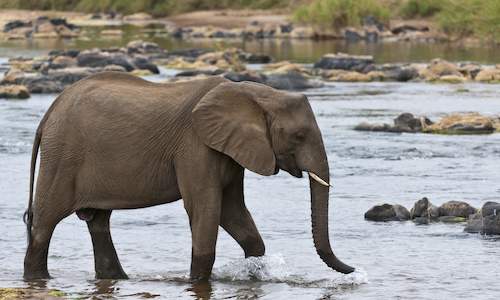
The flow of water entering the Kruger National Park through the Sabie and Olifants Rivers may potentially increase over time, as a pilot project gets underway upstream. An international initiative being tested in South Africa, India, Indonesia and the Caribbean is trying to determine how upstream users can be given incentives to protect river catchments, providing more or better quality water to users downstream.
After two years of analysis, the sites chosen for the pilot projects are the Ga-Selati River in the Lower Olifants catchment and the Sabie River. Catchment protection services are now being implemented in the two rivers, with the added bonus of improving the livelihoods of the people living upstream.
The Olifants River catchment was given high priority in the site selection as it is under such extreme stress with a demand for water far exceeding supply. In 2000, water requirements were 965 million cubic metres, but only 781 million cubic metres were available.Projections by the department of water affairs and forestry indicate that this situation is expected to worsen in future, to the detriment of the environment as river flows decrease.The excessive demand for the Olifants River's water resources places tremendous stress on the river's ecological needs and compounds events such as the recent fish deaths in Kruger, with the park being the last downstream user in South African before the river enters Mozambique.The Sabie River catchment was chosen as, in terms of the new national water act introduced in 1998, it is one of the first catchments to roll-out the implementation
of its Catchment Management Association (CMA). The pilot project will look at how to incorporate payments for catchment protection services into the management plan of a CMA.Payments for catchment protection services rely on having downstream users who are prepared to pay those upstream in cash or kind for protecting the river. The concept of paying to protect the environment and the services it offers is fairly new, but is rapidly gaining global support.Many companies in developed countries are already paying for carbon sequestration schemes to offset their carbon dioxide production to help mitigate the effects of global warming. Nicola King of the CSIR is coordinating the programme in South Africa.
King says that some of the 'payment' options that have been identified in this scheme include downstream commercial farmers giving up their time to train upstream emergent farmers in the best agricultural practises for saving water.Downstream mines can also provide old piping materials to upstream farmers to reduce water losses from the use of unlined earth canals for irrigation. Other ways of protecting catchments include preventing excessive grazing of livestock in sponge areas or excessive harvesting in wetlands, controlling soil erosion and removing alien invasive vegetation. It is hoped that the lessons learnt from these two pilot projects can be extrapolated into the rest of the country.
By Melissa Wray

 Six major rivers, stretch across the wilderness of Kruger National Park, the Crocodile River, the Limpopo River and the Olifants, Sabie, Let...
Six major rivers, stretch across the wilderness of Kruger National Park, the Crocodile River, the Limpopo River and the Olifants, Sabie, Let...